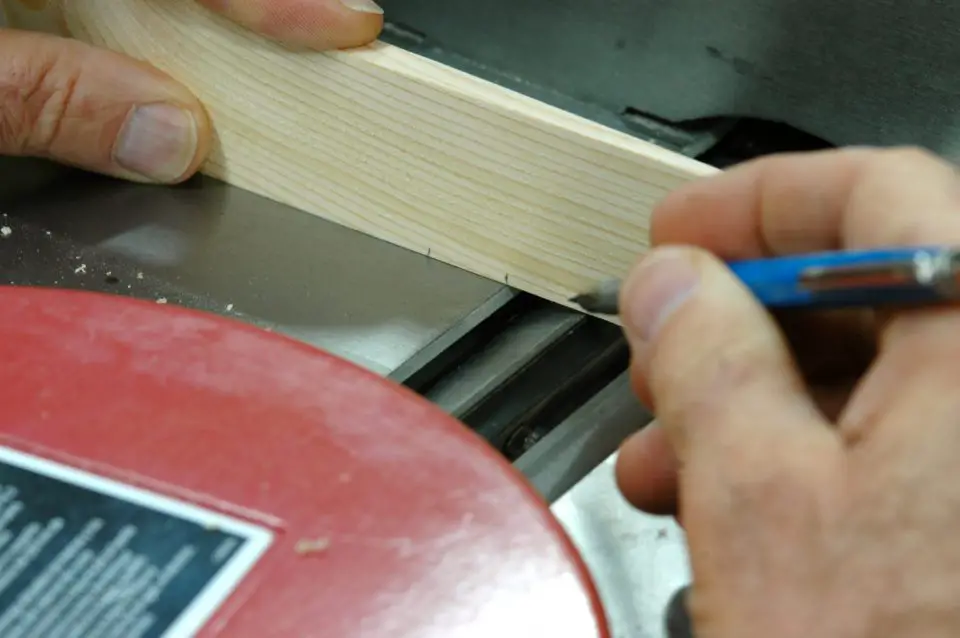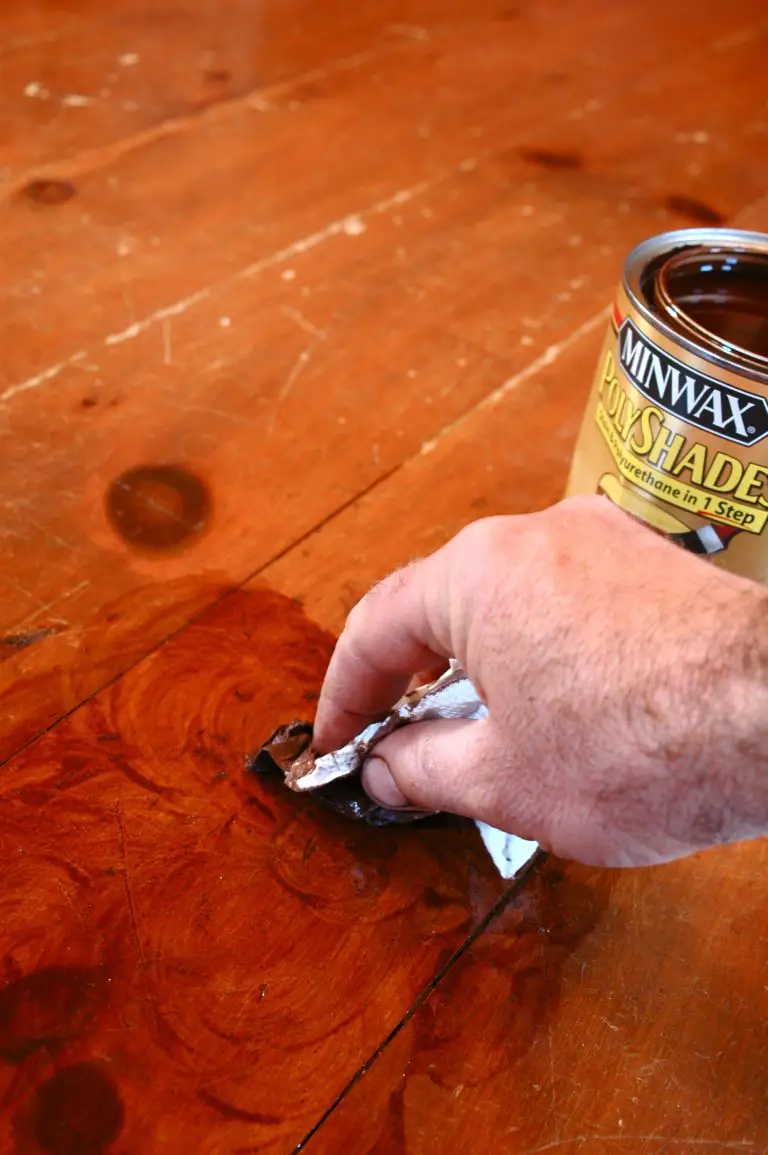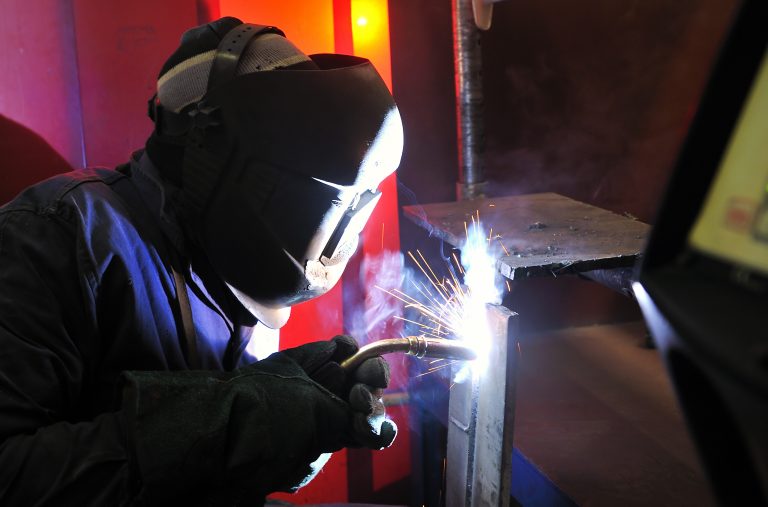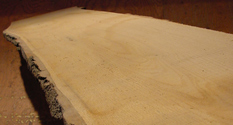Do you need to dry lumber for woodworking and making furniture? Want to learn how to air-dry furniture wood properly so you avoid the misery of warping, twisting and ruined woodworking projects? You’ve come to the right place. I’ve been a cabinetmaker since the mid-1980s, and drying green lumber for furniture is something I do all the time. That’s me working with some rough cherry in my shop in the photo below. Drying wood is important because big things go wrong if you don’t do it right. There’s a lot of misunderstanding about air-drying furniture wood, too. It all comes down to moisture. Even kiln-dried lumber that supposed to be “dry” often isn’t dry enough.
“Be sure to check out the wood drying Q&A section at the end of this post. All questions come from real people looking for real answers. Send your own questions to [email protected]” – Steve Maxwell

Working with wood that’s too wet is like falling into a pit. By the time your plight is obvious, it’s usually too late. Assembled parts warp, glue joints crack, and a rising sense of panic takes hold. I know because I’ve felt it. I also know it doesn’t have to be this way. An understanding of the wily ways of wet wood can keep you one step ahead of trouble while letting you enjoy success using all kinds of inexpensive and interesting lumber that might otherwise cause you grief. I’ve been working with wood for fun and professionally for 30+ years, so you can trust what you’ll read here.
Air-Drying Lumber: Understanding Equilibrium Moisture Content
The first thing to understand is that wood is a moisture sponge. It slowly loses or absorbs moisture from its surroundings. When a piece of wood is in balance with the moisture of the air around it, the wood is said to have reached equilibrium moisture content (EMC). Kiln-dried or air-dried, it’s all the same as far as absorbing moisture goes. Wood stored in a damp place gets wetter and bigger. Dry air makes wood drier and smaller. The trick is ensuring that your wood has a moisture content (and size) in balance with the driest interior environment your completed woodworking project, trim or flooring is likely to face. And getting there depends on where you start.
Air-Drying Wood Tip #1 – Stack with Spacers and a Light Breeze
As wood comes off the sawmill it’s wettest of all, with a moisture content that can be higher than 30%. It’s like a slice of celery. If you drive a nail into it, water will appear. And if you’ll be air-drying your own lumber (my personal preference), you’ll need to stack that wet wood with spacers between each layer, in a location with at least a little breeze to prevent mold growth. A shady outdoor spot is good, and so is an airy shed or hayloft. A garage probably doesn’t have enough airflow, and a basement certainly doesn’t. This is phase#1 of the drying process and it’ll bring wood moisture content down to 12% to 16% tops, depending on the climate in your part of the world. Just be careful. Wood feels ready to use after phase#1 drying is complete, but it’s not nearly dry enough to prevent trouble. Ask me how I know this and you’ll hear some sad stories.
Air-Drying Wood Tip #2 – Target 7-9% Moisture Content
In regions with some kind of a heating climate (as I do), wood needs to have a 7% to 9% moisture content to prevent projects from warping and cracking during the driest part of the heating season. This requires a second drying phase, and skipping this step is where most moisture-related trouble starts. You can store lumber in a barn or unheated garage or shed for a hundred years and it’ll never get dry enough for indoor furniture, cabinets or shelves. For this you need a little heat, air and time. How much depends on the thickness of the wood, how wet it is, and the temperature and humidity of your heated space.
Air-Drying Wood Tip #3 – Stack Wood with all Sides Exposed
- Video Watch Time = 4 minutes
Fall and winter is a great time to dry wood because homes and heated workshops everywhere become ideal phase#2 drying spaces. And the process doesn’t take long if you apply three tricks. Begin by allowing at least a couple of days drying time after each major cutting and planing step as you build projects. Freshly exposed wood surfaces need the most drying, and you want this to happen before critical joinery stages. Also, to make the most of this rough-cut drying time, be sure to stack project parts with all sides exposed between work sessions. This could mean standing them up, or stacking with spacer strips between each layer. Whatever it takes to get air around each piece is what you want. To further speed phase#2 drying, point an electric household fan on your wood between work sessions. The added air circulation makes wood dry at least twice as fast. It’s amazing.
Air-Drying Wood Tip #4 – Wait as Long as Possible Before Cutting Final Parts
As you build, don’t cut parts down to final size immediately. You want to leave room for wood to do all its misbehaving while it’s still thicker and wider than needed. You want to joint, trim and plane each part only after the wood has fully stabilized. So how do you know when this has happened?
A moisture meter isn’t absolutely essential for taking guesswork out of the wood/moisture equation, but it sure does help. All models work on the same principle. You can see me using my old, trusty moisture meter in the video above. Click the box to watch. The tool induces a small electric current through the wood and measures electrical resistance. The lower the resistance, the higher the moisture content. Percentage figures are shown with an analog needle or digital readout. Be sure to measure freshly cut surfaces to get an accurate reading of internal moisture content. Surfaces of boards that have been exposed to the air for a while could be substantially drier than wood deep within the board. As you see how fast wood dries during construction, you’ll develop a sense of how long it takes wood to dry enough, and you’ll need the meter less and less.
Learning to dry wood properly isn’t the most glamorous workshop skill, but I know for sure that a few moisture-related wood disasters go a long way to making you an enthusiastic learner.
Air-Drying Wood Bonus Info: Make Your Jointer Cut Sweetly
Want to get the most out of your jointer? It’s an essential tool for fine woodworking using solid wood. Check out this video on how I change and adjust jointer knives so they cut perfectly, without the need for special tools of any kind. All you need is a small chunk of wood. The trick is getting all the knives so they’re exactly the same height. That’s what lets any jointer cut smoothly.

Air-Drying Wood Q&A
Q: Will 2 months be long enough to initially dry 3/4″ x 3″ birch that’s quite wet before going on to jointing and planing? I’ll have a fan blowing all day and night on the pile of wood with spacers between each layer. ?
A: How wet is the birch? The safest approach, especially when you’re starting out with this whole wood drying thing, is to get a moisture meter so you can monitor things as you go along. Eventually you won’t need the meter much, but for now it’s a powerful learning tool.
Yes, I think your wood will be ready for jointing and planing and further drying after a couple months. It might even be sooner, depending on the moisture content of the wood and the humidity and air circulation in your workshop. One way to know without the benefit of a moisture meter is to carefully measure the width of each board down to 1/32”. Record the date and width measurements in pencil on the board, one measurement under the other with dates. When the width becomes more or less stable, you can move on to jointing and planing.












